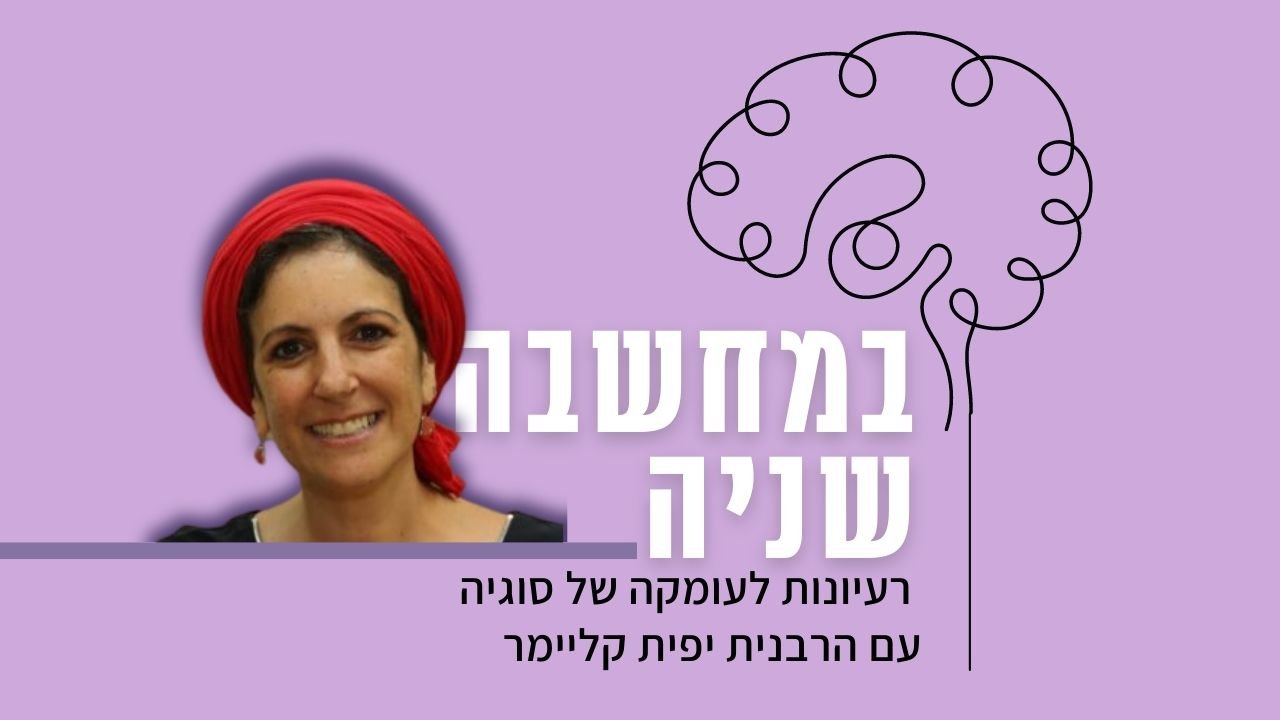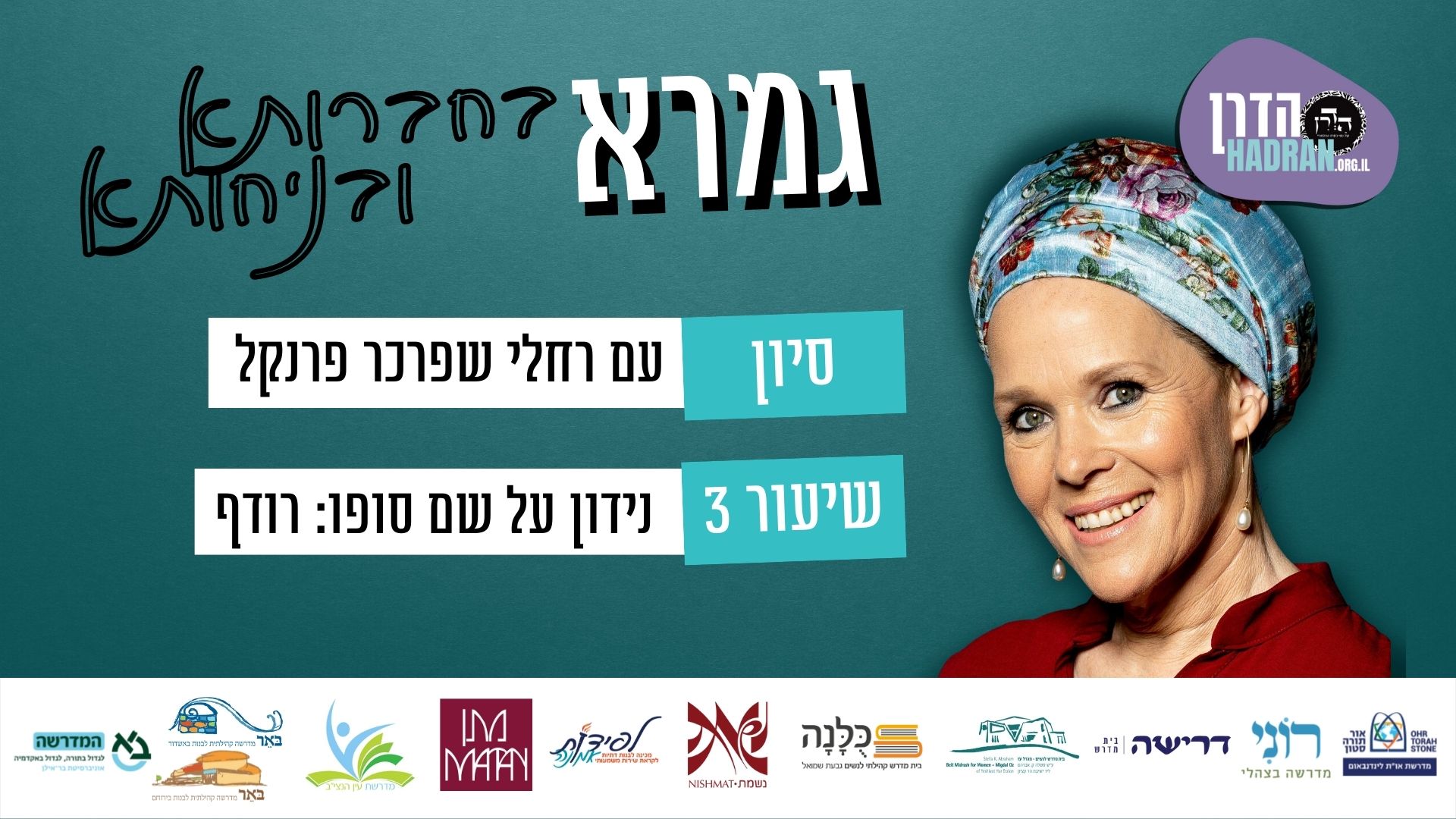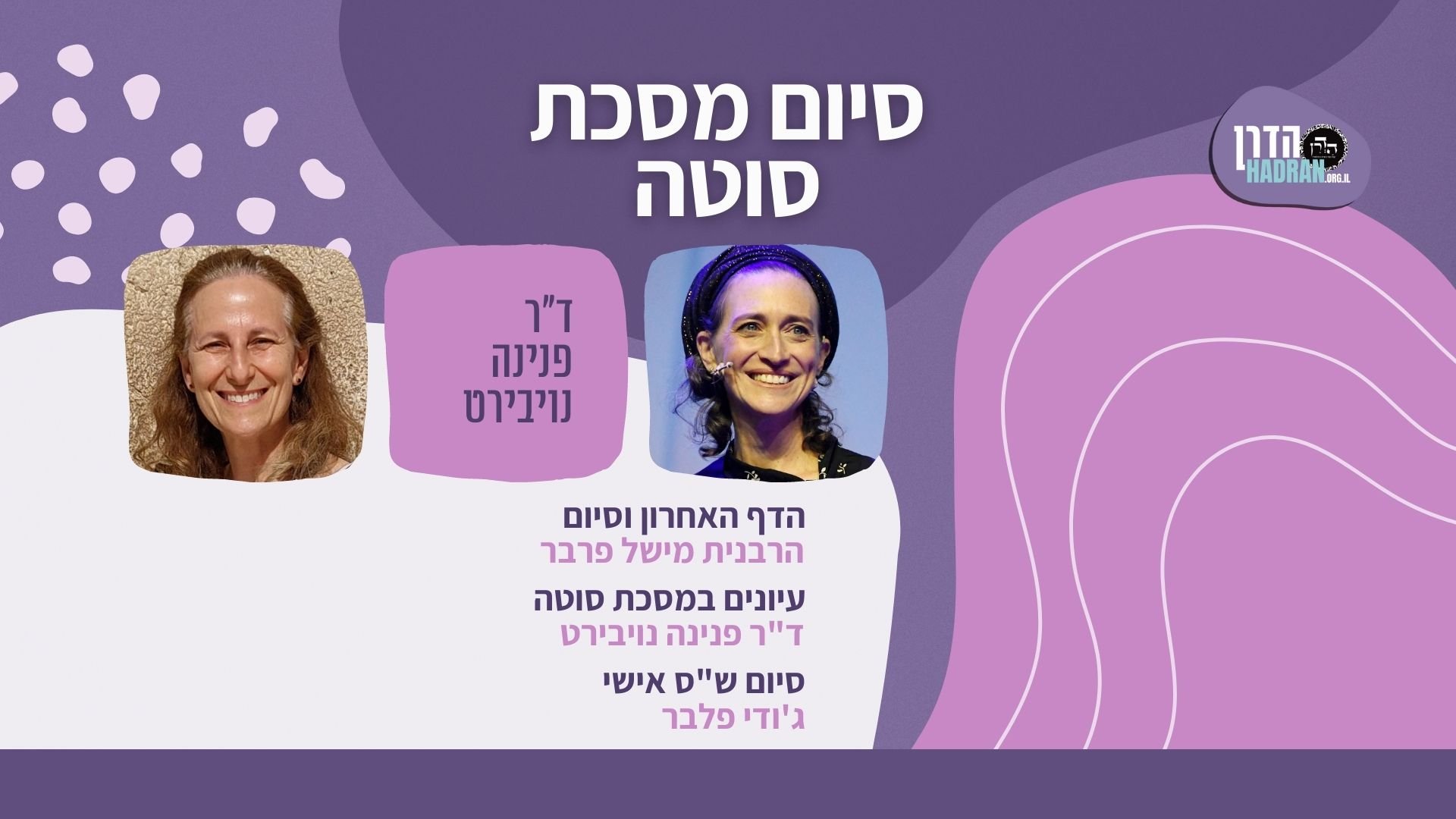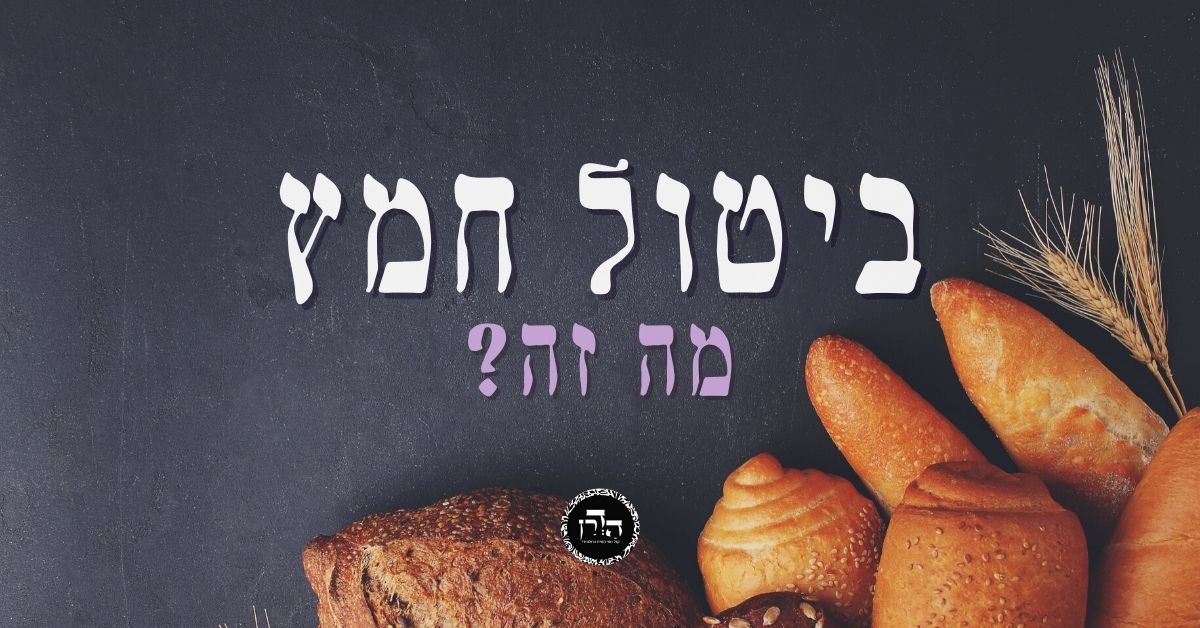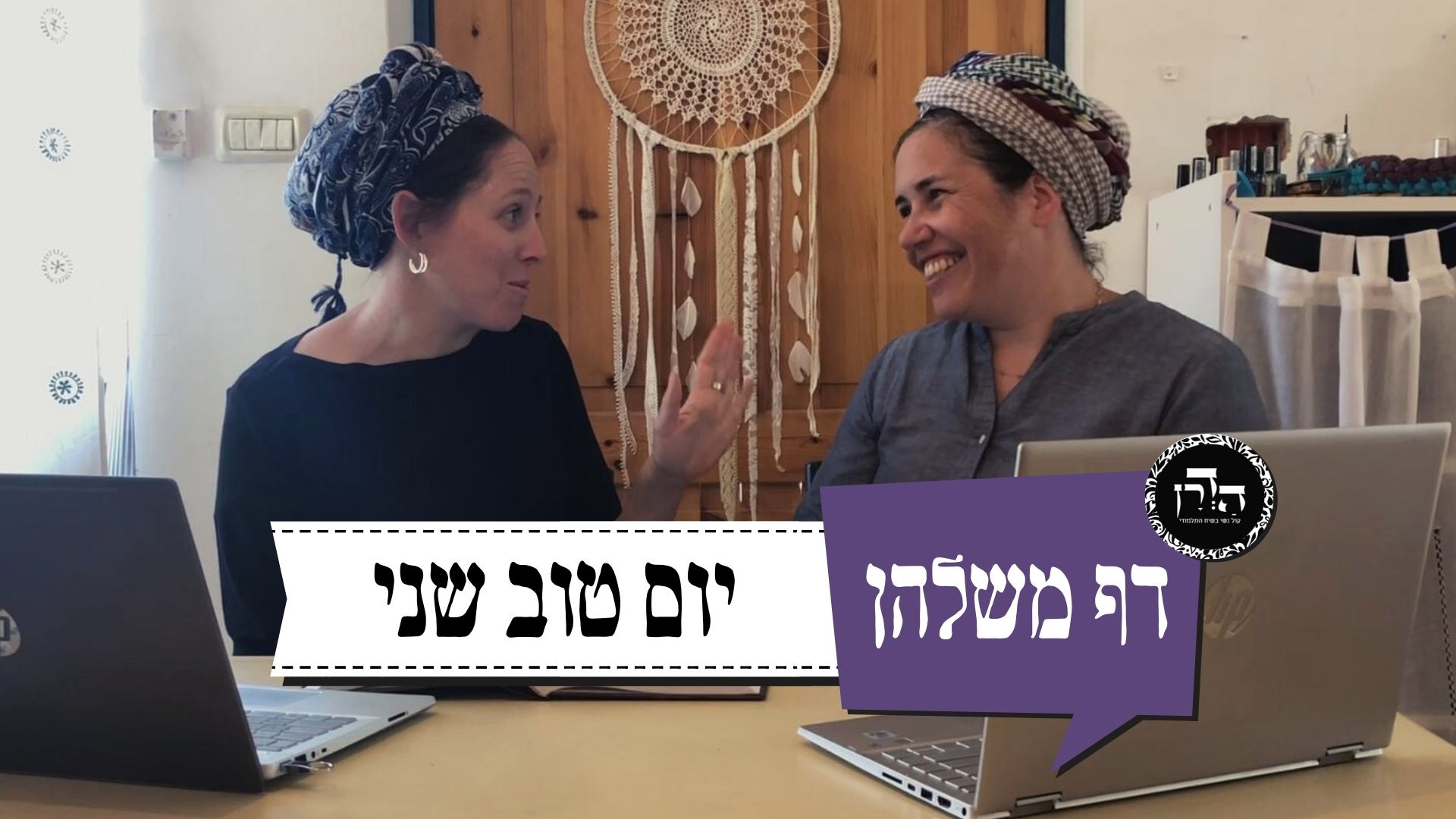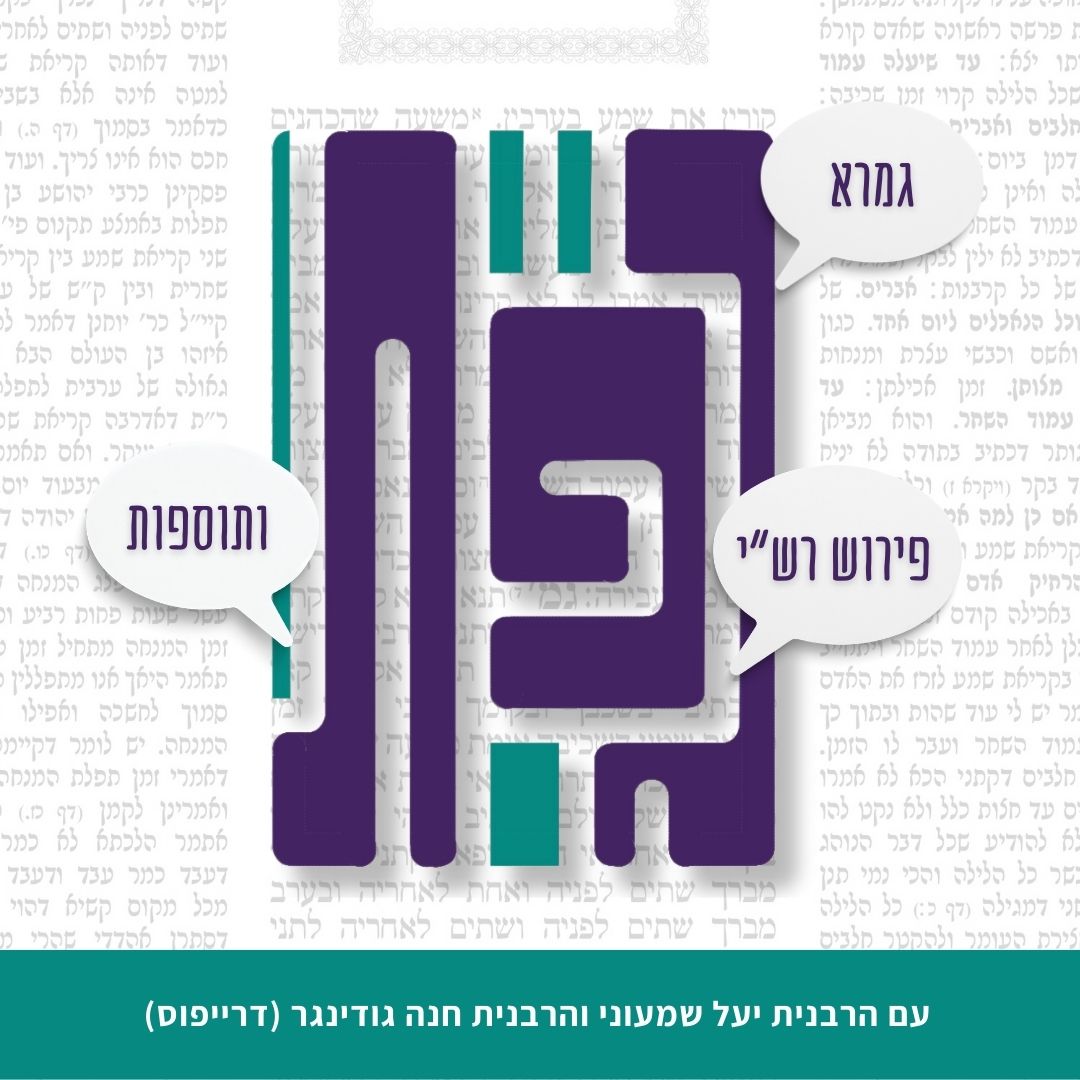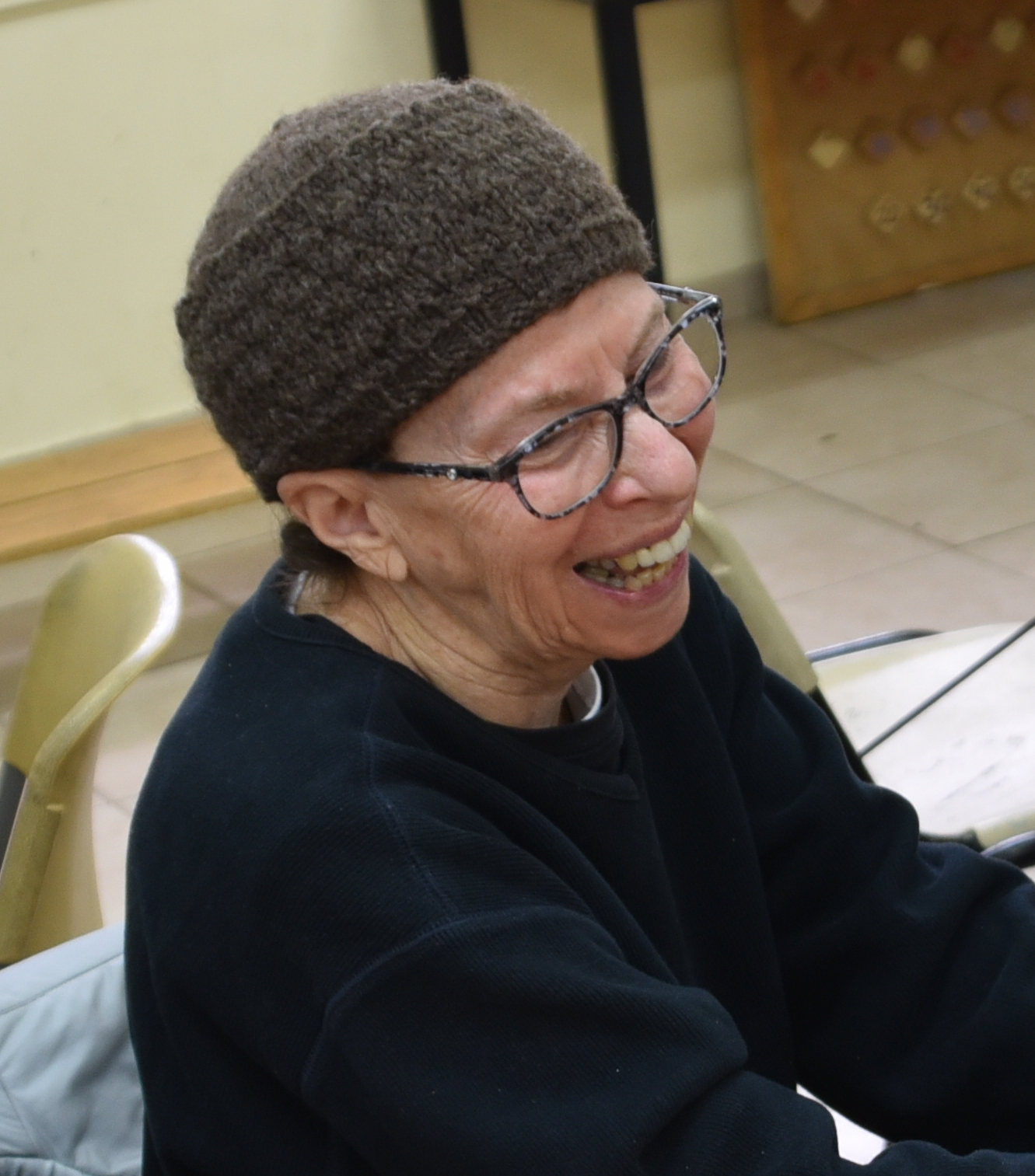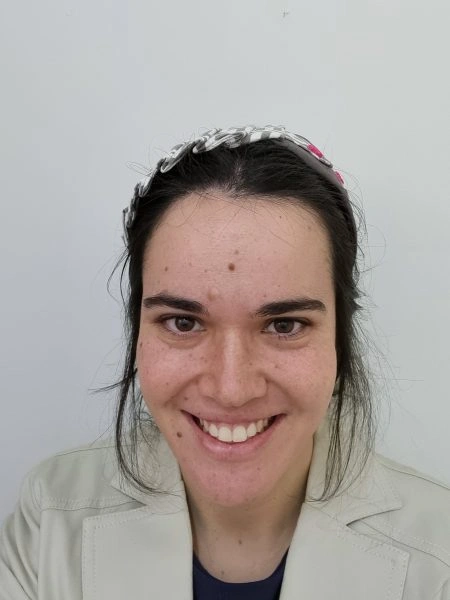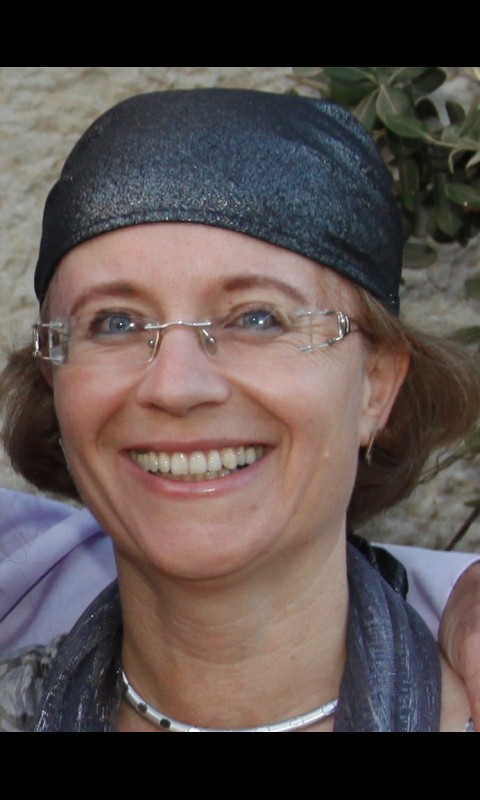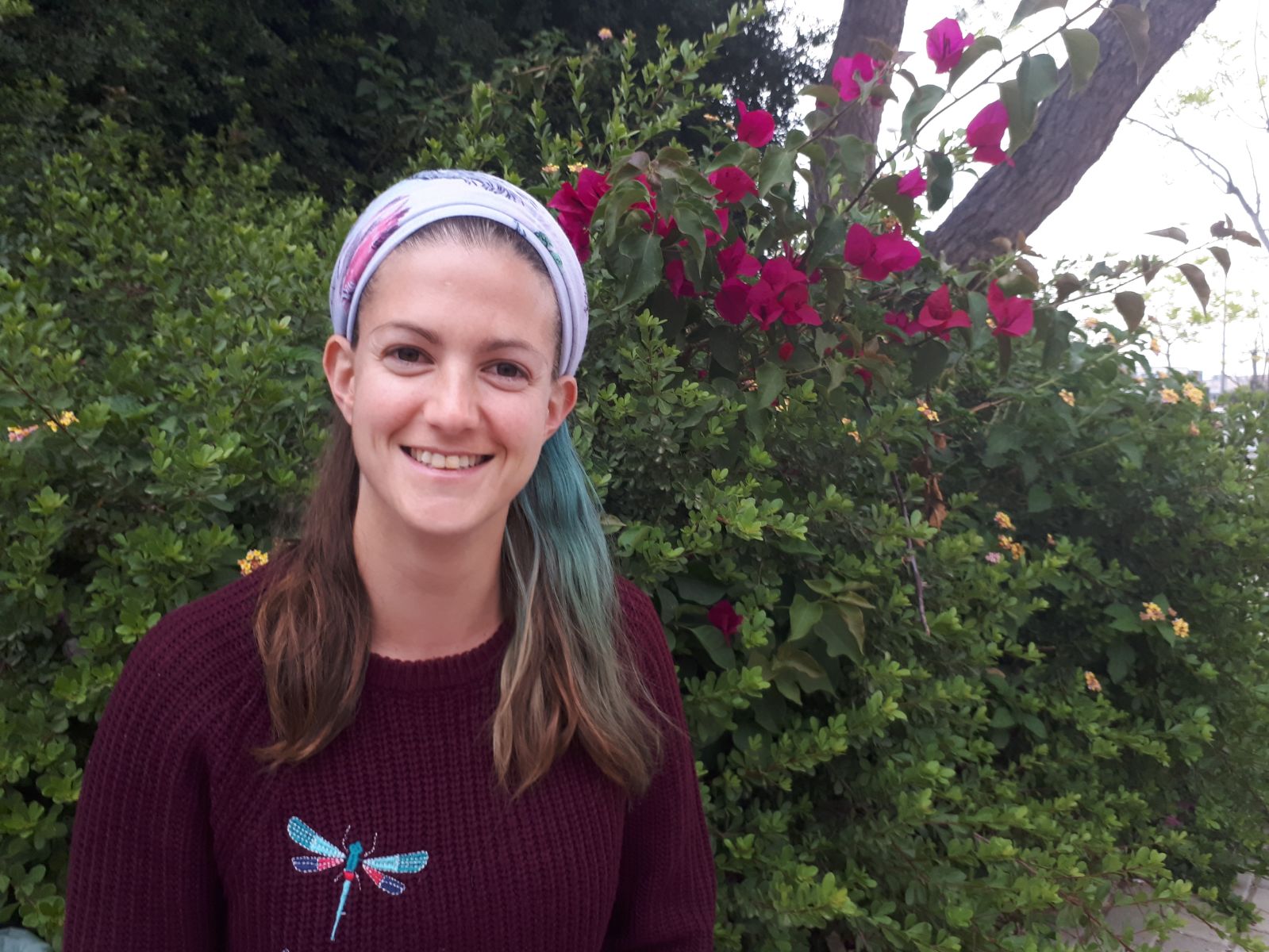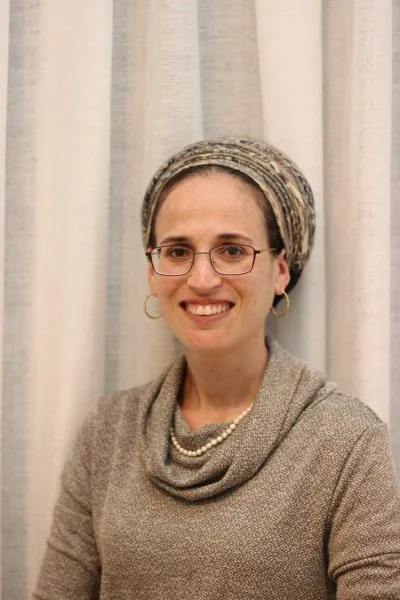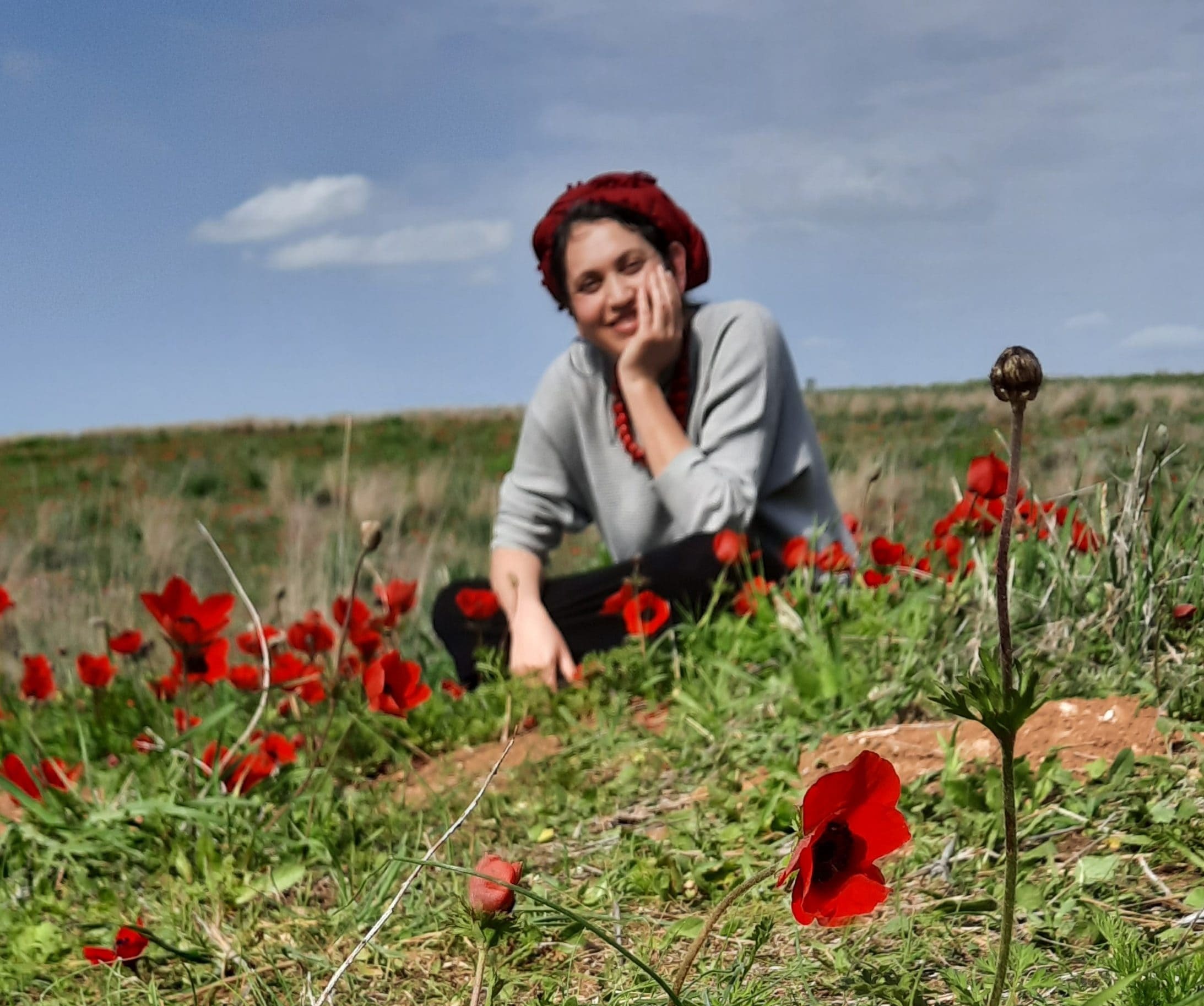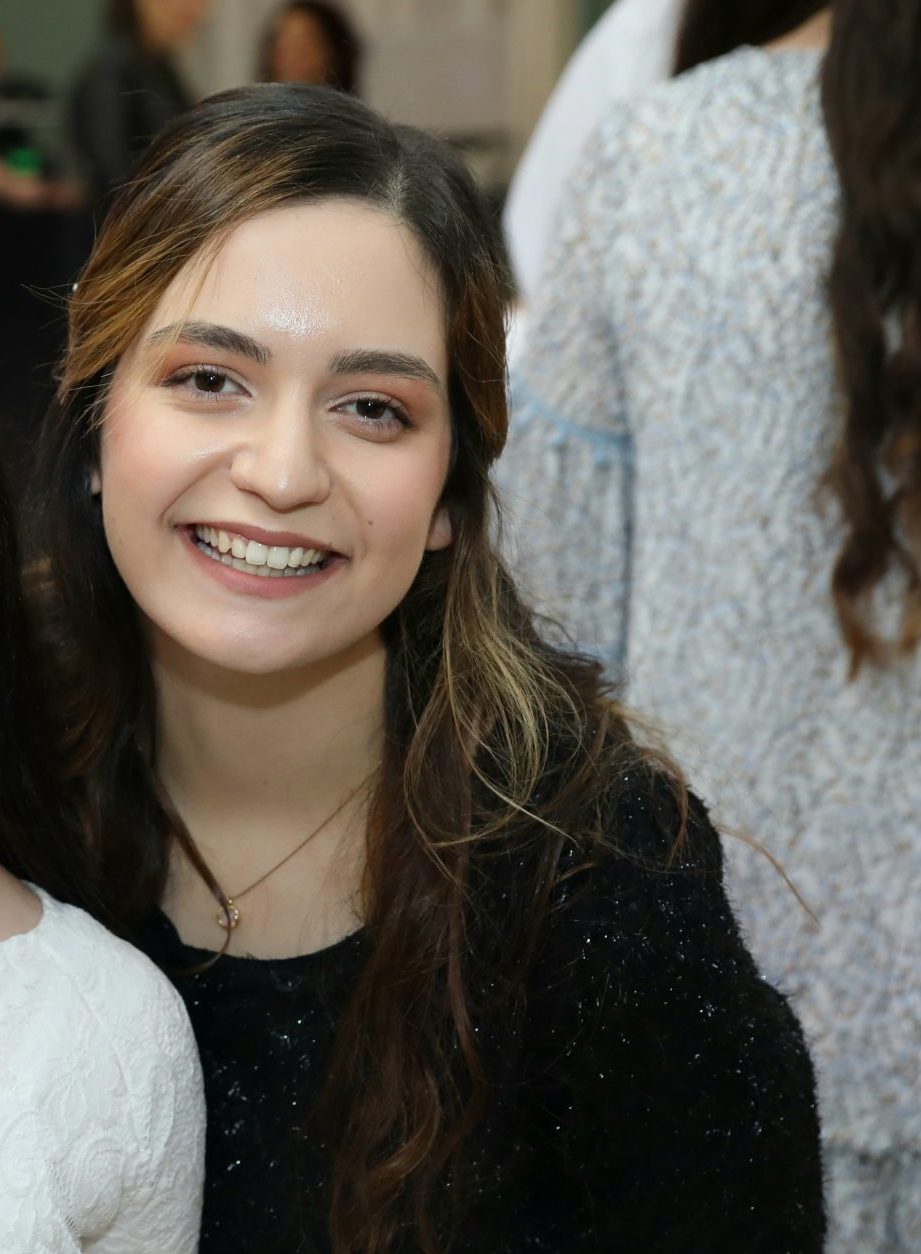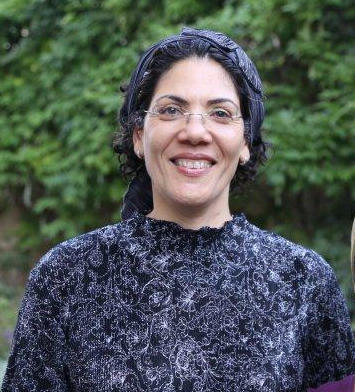האם יש עוד מקרים שמהמילה "הוא” אפשר להבין שצריך להיות במצב מסויים לאורך כל התקופה המסויימת? למה אם אביו מת והניח לו כסף או ספינתו ביום עם הרבה כסף (או סחורה שווה הרבה כסף), ההקדש לא יכול לתבוע מכספים אלו והוא משלם כעני? הגמרא מסבירה קצת אחרת את המקרים האלו כדי להבינם. מאיזה יום סופרים את כל קטיגוריה – לדוגמה, מיום ששים זה בקטיגוריה אחרת או מיום ששים ואחד? יש ברייתא שמונה כל מיני מקרים שסופרים שנים ושהם הולכים לא לפי שנה שמתחיל מתשרי אלא משנת התחלת אותו עניין. למה אשה זקנה יורדת לשליש משוויה שכהיתה צעירה וגבר יורד יותר משליש בהגיעו לגיל ששים?
הלימוד השבוע מוקדש ע”י קרוליין בולג לע”נ פנחס בן מנשה פייזר.
רוצה להקדיש שיעור?

כלים
הלימוד השבוע מוקדש ע”י קרוליין בולג לע”נ פנחס בן מנשה פייזר.
כלים
העמקה
רוצה להבין מה באמת קורה מתחת לפני השטח של הסוגיה?
שיעורים, פודקאסטים והרחבות של מיטב המורות שלנו יפתחו לך עוד זוויות וכיווני חשיבה.
חדשה בלימוד הגמרא?
זה הדף הראשון שלך? איזו התרגשות עצומה! יש לנו בדיוק את התכנים והכלים שיעזרו לך לעשות את הצעדים הראשונים ללמידה בקצב וברמה שלך, כך תוכלי להרגיש בנוח גם בתוך הסוגיות המורכבות ומאתגרות.
פסיפס הלומדות שלנו
גלי את קהילת הלומדות שלנו, מגוון נשים, רקעים וסיפורים. כולן חלק מתנועה ומסע מרגש ועוצמתי.
ערכין יח
וְאַחַר כָּךְ מֵתָה בִּתּוֹ, פִּקֵּחַ וְנִתְחָרֵשׁ וְחָזַר וְנִתְפַּקֵּחַ, פָּתוּחַ וְנִסְתַּמֵּא וְאַחַר כָּךְ נִתְפַּתֵּחַ, שָׁפוּי וְנִשְׁתַּטָּה וְחָזַר וְנִשְׁתַּפָּה — כָּשֵׁר. זֶה הַכְּלָל: כֹּל שֶׁתְּחִילָּתוֹ וְסוֹפוֹ בְּכַשְׁרוּת — כָּשֵׁר.
and afterward his wife, who was the daughter of the father-in-law, died, which means that the witness is no longer related to the party involved; or when he was able to hear, and then became a deaf-mute, and again became able to hear; or when he could see, and subsequently became blind, and afterward could see again; or when he was halakhically competent, and then became an imbecile, and again became halakhically competent; in all these cases he is fit to testify.This is the principle: Any individual whose beginning and end is in a state of qualification to serve as a witness is qualified to testify, even if he was unfit in the interim. Evidently, it is not derived from the verse: “And he is a witness,” that the witness must be fit from the beginning to the end.
שָׁאנֵי הָתָם, דְּאָמַר קְרָא: ״אוֹ רָאָה… אִם לֹא יַגִּיד״, בִּרְאִיָּיה וְהַגָּדָה תְּלָא רַחְמָנָא מִילְּתָא, וְהָא אִיכָּא. וְאֶלָּא ״וְהוּא״ לְמָה לִי?
The Gemara explains: The halakha is different there, with regard to testimony, as the verse states: “He is a witness, whether he has seen…if he does not utter” (Leviticus 5:1). This formulation indicates that the Merciful One renders the matter of testimony dependent on seeing and recounting the content of his testimony. And in this instance there is both valid seeing and valid recounting, despite the fact that the witness was disqualified in the interim. The Gemara asks: But if so, why do I need the exclusion of the verse: “And he is a witness”?
לְכִדְתַנְיָא: רָאָה סִיאָה שֶׁל בְּנֵי אָדָם עוֹמְדִין, וְעֵידָיו בֵּינֵיהֶן, וְאָמַר ״מַשְׁבִּיעַנִי עֲלֵיכֶם אִם יוֹדְעִים אַתֶּם לִי עֵדוּת שֶׁתָּבוֹאוּ וּתְעִידוּנִי״, יָכוֹל יְהוּ חַיָּיבִין? תַּלְמוּד לוֹמַר ״וְהוּא עֵד״, וַהֲרֵי לֹא יִיחֵד עֵידָיו.
The Gemara answers: The limiting clause is necessary for that which is taught in a baraita: If someone saw a crowd of people standing, and his witnesses were among them, and he said: I hereby administer an oath to you, if you know any testimony relating to me, that you will come and testify for me, one might have thought that this form of address suffices to single out the witnesses. This would mean that if the witnesses take a false oath that they do not know testimony with regard to the person who addressed them, they would be obligated to bring an offering of an oath of testimony. Therefore, the verse states: “And he is a witness,” to emphasize that the offering applies only to one who is singled out as a witness, and in this case the individual did not single out his witnesses, as he addressed a whole crowd of people. Consequently, the witnesses are exempt.
יָכוֹל אֲפִילּוּ אָמַר ״כׇּל מִי״? תַּלְמוּד לוֹמַר ״וְהוּא עֵד״, וַהֲרֵי יִיחֵד עֵידָיו.
The baraita continues: One might have thought that even if this individual said to the crowd: I adjure whoever knows testimony relating to me that he will come and testify for me, that even in the case of this more specific address the witnesses are likewise exempt from the offering of an oath of testimony. Therefore, the verse states: “And he is a witness,” and by clarifying his appeal the individual did single out his witnesses. Consequently, in this situation the witnesses would be obligated to bring the offering.
אֲבָל בַּקׇּרְבָּנוֹת אֵינוֹ כֵּן וְכוּ׳. אָבִיו מֵת וְהִנִּיחַ לוֹ רִיבּוֹא — עָשִׁיר הוּא! אָמַר רַבִּי אֲבָהוּ, אֵימָא: מַנִּיחַ לוֹ רִיבּוֹא.
§ The mishna teaches: But with regard to the offerings of a leper that is not so. If the leper is destitute, even if his father died and left him ten thousand dinars, the Temple treasury has no share in it. The Gemara raises a difficulty: If his father already died and left him ten thousand dinars, he is wealthy. How could he be considered destitute at all? Rabbi Abbahu said that one should say instead: His father is dying and leaving him ten thousand dinars, but he has not yet died.
פְּשִׁיטָא! כְּשֶׁהָיָה אָבִיו גּוֹסֵס. מַהוּ דְּתֵימָא: רוֹב גּוֹסְסִין לְמִיתָה? קָא מַשְׁמַע לַן.
The Gemara raises a further difficulty: If so, it is obvious that with regard to the Temple treasury he remains destitute, as at the time he is in fact destitute. The Gemara answers: The halakha was stated with regard to a case where his father is moribund. Lest you say that as the majority of moribund people proceed to die the son should be considered wealthy even before the father dies, the mishna therefore teaches us that the son retains his status as destitute until the father actually dies.
סְפִינָתוֹ בַּיָּם וּבָאָה לוֹ בְּרִיבּוֹאוֹת, עָשִׁיר הוּא! אָמַר רַב חִסְדָּא: כְּשֶׁהָיְתָה מוּחְכֶּרֶת וּמוּשְׂכֶּרֶת בְּיַד אֲחֵרִים. וְהָאִיכָּא שְׂכִירוּת? שְׂכִירוּת אֵינָהּ מִשְׁתַּלֶּמֶת אֶלָּא לְבַסּוֹף.
The mishna likewise teaches: If his ship is at sea and merchandise valued at ten thousand dinars is coming into his possession, this money is not taken into consideration by the Temple treasury. The Gemara asks: But isn’t he wealthy? Rav Ḥisda said: The mishna is referring to a case where his ship was leased or rented to others, and therefore the merchandise it contains belongs to someone else. The Gemara asks: But isn’t there the rent money that will be paid to the leper? The Gemara answers: Rent is paid only at the end of the rental period, which means that the owner is destitute in the meantime.
וְתִיפּוֹק לֵיהּ מִשּׁוּם סְפִינָה! הָא מַנִּי? רַבִּי אֱלִיעֶזֶר הִיא, דִּתְנַן: רַבִּי אֱלִיעֶזֶר אוֹמֵר, אִם הָיָה אִיכָּר — נוֹתֵן לוֹ צִמְדּוֹ, וְחַמָּר — נוֹתֵן לוֹ חֲמוֹרוֹ.
The Gemara raises another difficulty: But let the mishna derive and determine that the leper is wealthy due to the fact that he owns a ship. The Gemara answers: In accordance with whose opinion is this statement in the mishna? It is in accordance with the opinion of Rabbi Eliezer, who maintains that with regard to determining one’s obligation to bring an offering as a wealthy or destitute individual, the property that he uses for business is not taken into account. As we learned in a mishna (23b): When someone’s property is repossessed in order to pay his debt to the Temple treasury, Rabbi Eliezer says: If he was a farmer, the treasurer gives him permission to keep his pair of oxen with which he plows the field. If he was a donkey driver, the treasurer gives him permission to keep his donkey.
מַתְנִי׳ הַשָּׁנִים בַּנִּידָּר, כֵּיצַד? יֶלֶד שֶׁהֶעֱרִיךְ זָקֵן — נוֹתֵן עֵרֶךְ זָקֵן, וְזָקֵן שֶׁהֶעֱרִיךְ אֶת הַיֶּלֶד — נוֹתֵן עֵרֶךְ יֶלֶד. הָעֲרָכִין בַּנֶּעֱרָךְ, כֵּיצַד? אִישׁ שֶׁהֶעֱרִיךְ הָאִשָּׁה — נוֹתֵן עֵרֶךְ אִשָּׁה, וְאִשָּׁה שֶׁהֶעֱרִיכָה אִישׁ — נוֹתֶנֶת עֵרֶךְ אִישׁ.
MISHNA: The sum fixed by the Torah based on the years of age is in accordance with the age of the subject of the vow; how so? A youth who valuated an elder gives the valuation of an elder, and an elder who valuated a youth gives the valuation of a youth. And the distinction based on sex that is written in the halakhot of valuations is stated with regard to the one valuated; how so? A man who valuated a woman gives the valuation of a woman, and a woman who valuated a man gives the valuation of a man.
וְהָעֵרֶךְ בִּזְמַן הָעֵרֶךְ, כֵּיצַד? הֶעֱרִיכוֹ פָּחוּת מִבֶּן חָמֵשׁ, וְנַעֲשֶׂה יָתֵר עַל בֶּן חָמֵשׁ, פָּחוּת מִבֶּן עֶשְׂרִים, וְנַעֲשָׂה יָתֵר עַל בֶּן עֶשְׂרִים — נוֹתֵן בִּזְמַן הָעֵרֶךְ.
And the different valuation based on the age of the one valuated is determined at the time one takes the vow of valuation; how so? If one valuated another when he was less than five years old, when his valuation is five shekels, and before payment to the Temple treasury the subject of the vow became more than five years old, when his valuation is ten shekels; or if one valuated another when he was less than twenty years old, when his valuation is ten shekels, and before payment to the Temple treasury the subject of the vow became more than twenty years old, when his valuation is fifty shekels, in all these cases he gives payment according to the age of the subject of the valuation at the time of the valuation.
גְּמָ׳ תָּנוּ רַבָּנַן: אַתָּה הִקַּשְׁיתָּ דָּמִים לַעֲרָכִין, מַרְגָּלִית לְקַלִּים, וְלִידּוֹן בִּכְבוֹדוֹ.
GEMARA: With regard to the statement of the mishna: And the valuation is determined at the time one takes the vow of valuation, the Sages taught in a baraita: You have compared pledges of assessments for the Temple treasury, i.e., one who takes a vow to donate a certain person’s assessment, to vows of valuations. This comparison applies with regard to a pearl belonging to light people, i.e., the poor. In other words, just as the assessment of a pearl is determined by the pearl’s location in a village of the poor rather than by the potential price of the pearl in the city market, so too, the valuation of a person is determined at the time of the valuation. And similarly, the comparison teaches that the court is required to assess the value of the limb by its significance, i.e., in the case of a limb that is vital to one’s survival, the valuation of the limb is equivalent to the valuation of the whole person.
יָכוֹל נַקִּישׁ עֲרָכִין לְדָמִים, שֶׁיִּתֵּן כִּשְׁעַת נְתִינָה? תַּלְמוּד לוֹמַר: ״כְּעֶרְכְּךָ כֵּן יָקוּם״, אֵינוֹ נוֹתֵן אֶלָּא בִּזְמַן הָעֵרֶךְ.
One might have thought that we should compare valuations to assessments in that the one pledging must give a person’s valuation not corresponding to his value at the time of the pledge but in accordance with his value at the time of giving, as is the case with regard to vows of assessments. To counter this suggestion the verse states: “According to your valuation it shall stand” (Leviticus 27:17), which teaches that the one making the valuation gives his donation only according to the valuation of the person at the time of the valuation, as stated in the mishna.
מַתְנִי׳ יוֹם שְׁלֹשִׁים כִּלְמַטָּה הֵימֶנּוּ, שְׁנַת חָמֵשׁ וּשְׁנַת עֶשְׂרִים כִּלְמַטָּה מֵהֶם, שֶׁנֶּאֱמַר: ״וְאִם מִבֶּן שִׁשִּׁים שָׁנָה וָמַעְלָה״, הֲרֵי אָנוּ לְמֵדִים בְּכוּלָּן מִשְׁנַת שִׁשִּׁים, מָה שְׁנַת שִׁשִּׁים כִּלְמַטָּה הֵימֶנָּה, אַף שְׁנַת חָמֵשׁ וּשְׁנַת עֶשְׂרִים כִּלְמַטָּה הֵימֶנָּה.
MISHNA: The Torah provides three age categories that determine the amount of the valuation: From the age of one month until age five, from age five until age twenty, and from age twenty until age sixty. For anyone less than one month old there is no valuation. The halakhic status of the thirtieth day is like that of the period preceding thirty days, and therefore the one who took the vow is exempt. Likewise, the halakhic status of the fifth year and the twentieth year is like that of the period preceding them. As it is stated: “And if it is from sixty years old and upward” (Leviticus 27:7), and we derive all the other age categories from the sixtieth year: Just as the halakhic status of the sixtieth year, where upward is written, is like that of the period preceding it, so too, the halakhic status of the fifth year and the twentieth year is like that of the period preceding them.
הֵן? אִם עָשָׂה שְׁנַת שִׁשִּׁים כִּלְמַטָּה מִמֶּנָּה לְהַחְמִיר, נַעֲשֶׂה שְׁנַת חָמֵשׁ וּשְׁנַת עֶשְׂרִים כִּלְמַטָּה מִמֶּנָּה לְהָקֵל?
The mishna asks: Is that so? Can one derive a halakha in this manner? If the Torah rendered the halakhic status of the sixtieth year like that of the period preceding it in order to be stringent and require one who valuated a sixty-year-old person to pay his valuation to the Temple treasury, shall we render the halakhic status of the fifth year and the twentieth year like that of the period preceding them in order to be lenient and pay a lower sum?
תַּלְמוּד לוֹמַר ״שָׁנָה״ ״שָׁנָה״ לִגְזֵירָה שָׁוָה, מָה שָׁנָה הָאֲמוּרָה בִּשְׁנַת שִׁשִּׁים כִּלְמַטָּה, אַף שָׁנָה הָאֲמוּרָה מִשְׁנַת חָמֵשׁ וּשְׁנַת עֶשְׂרִים כִּלְמַטָּה מִמֶּנּוּ, בֵּין לְהָקֵל וּבֵין לְהַחְמִיר. רַבִּי אֱלִיעֶזֶר אוֹמֵר: עֵד שֶׁיְּהוּ יְתֵירוֹת עַל הַשָּׁנִים חֹדֶשׁ וְיוֹם אֶחָד.
Therefore, the verse states “year” with regard to the fifth and twentieth years (see Leviticus 27:3–6), and “year” with regard to the sixtieth year (Leviticus 27:7), for a verbal analogy. Just as the halakhic status of the year stated with regard to the sixtieth year is like that of the period preceding it, so too, the halakhic status of the year stated with regard to the fifth year and the twentieth year is like that of the period preceding them, both in order to be lenient and in order to be stringent. Rabbi Eliezer says: Their halakhic status remains like that of the period preceding it, until they will be aged one month and one day beyond the fifth, twentieth, and sixtieth years.
גְּמָ׳ מוּפְנֶה, דְּאִי לָא מוּפְנֶה — אִיכָּא לְמִיפְרַךְ כִּדְפָרְכִינַן. ״שָׁנָה״ ״שָׁנָה״ יַתִּירָא כְּתִיבִי.
GEMARA: The Gemara notes: Evidently, the verbal analogy in the mishna is free, i.e., in each verse the word “year” is superfluous, and therefore can be used in the verbal analogy. This means that the halakha derived from the verbal analogy is considered as though it is written explicitly in the Torah. The significance of this fact is that if a verbal analogy is not free, it can be refuted by logical reasoning. In this case the refutation would be as we refuted it in the mishna, that if the fifth year and the twentieth year are considered the same as the respective periods preceding them, this generates a leniency. The Gemara confirms: The verbal analogy is free, as both the first written mention of “year” and the second written mention of “year” are superfluous.
לֵימָא מַתְנִיתִין דְּלָא כְּרַבִּי, דְּאִי רַבִּי — הָאָמַר: ״עַד״ ״וְעַד״ בַּכְּלָל.
The Gemara suggests: Let us say that the mishna is not in accordance with the opinion of Rabbi Yehuda HaNasi, as, if it is in accordance with the opinion of Rabbi Yehuda HaNasi, doesn’t he say that the word “until” means until and including? With regard to valuations, the Torah states: “From twenty years old until sixty years old…And if it is from five years old until twenty years old…And if it is from one month old until five years old” (Leviticus 27:3–6). Accordingly, in the opinion of Rabbi Yehuda HaNasi there should be no need for a verbal analogy to include the fifth year and the twentieth year in the periods preceding them.
דְּתַנְיָא: ״מִיּוֹם הָרִאשׁוֹן וְעַד יוֹם הַשְּׁבִיעִי״, יָכוֹל רִאשׁוֹן וְלֹא רִאשׁוֹן בַּכְּלָל, שְׁבִיעִי וְלֹא שְׁבִיעִי בַּכְּלָל,
The Gemara provides the source of Rabbi Yehuda HaNasi’s opinion. As it is taught in a baraita concerning the festival of Passover: The verse states: “For whoever eats leavened bread from the first day until the seventh day” (Exodus 12:15). One might have thought that the prohibition against eating leaven applies from the first day and onward but the first day is not included, and likewise that the prohibition continues until the seventh day but the seventh day is not included.
כָּעִנְיָן שֶׁנֶּאֱמַר ״מֵרֹאשׁוֹ וְעַד רַגְלָיו״, רֹאשׁוֹ וְלֹא רֹאשׁוֹ בַּכְּלָל, רַגְלָיו וְלֹא רַגְלָיו בַּכְּלָל?
This is similar to the matter that is stated with regard to a leper: “And the leprosy covers all the skin of him who has the mark from his head to his feet, as far as the priest can see…it is all turned white: He is pure” (Leviticus 13:12–13). This verse is understood as follows: The mark reaches from his head, but his head is not included; it reaches to his feet, but his feet are not included. Therefore, one might have thought the prohibition against consuming leaven on the festival of Passover likewise does not apply to the endpoints mentioned in the verse.
תַּלְמוּד לוֹמַר: ״עַד יוֹם הָאֶחָד וְעֶשְׂרִים לַחֹדֶשׁ בָּעָרֶב״. רַבִּי אוֹמֵר: אֵינוֹ צָרִיךְ, ״רִאשׁוֹן״ וְ״רִאשׁוֹן״ בַּכְּלָל, ״שְׁבִיעִי״ וּ״שְׁבִיעִי״ בַּכְּלָל!
Therefore, the verse states: “You shall eat unleavened bread, until the twenty-first day of the month in the evening” (Exodus 12:18). This proves that the seventh day of the Festival is included. Rabbi Yehuda HaNasi says: It is not necessary to cite this verse, as the prohibition against consuming leaven is from the first day of Passover, and the first day is included; and the ban continues until the seventh day, and the seventh day is included. Accordingly, with regard to valuations, even without a verbal analogy Rabbi Yehuda HaNasi should maintain that the twentieth year is included in the preceding period.
אֲפִילּוּ תֵּימָא רַבִּי, שַׁקּוֹלֵי מְשַׁקְּלִי קְרָאֵי. מִכְּדֵי כְּתִיב: ״מִבֶּן חֹדֶשׁ וְעַד בֶּן חָמֵשׁ שָׁנִים״, תּוּ ״מִבֶּן חָמֵשׁ וְעַד בֶּן עֶשְׂרִים״ לְמָה לִי? הִילְכָּךְ אִישְׁתְּקִלוּ לְהוּ.
The Gemara answers: You may even say that the opinion in the mishna is in accordance with that of Rabbi Yehuda HaNasi, as the verses offset each other, and therefore their meaning is unclear without the verbal analogy. The Gemara elaborates: Since it is written: “From one month old until five years old” (Leviticus 27:6), this ostensibly includes the fifth year within the stated category. If so, why do I need this mention of five years as well: “And if it is from five years old until twenty years old, then your valuation shall be for the male twenty shekels” (Leviticus 27:5)? Therefore, with regard to the fifth year, as both verses mention that year, the verses offset each other. Consequently, even according to the opinion of Rabbi Yehuda HaNasi the verbal analogy is necessary.
אָמַר מָר: ״רֹאשׁוֹ״ — וְלָא רֹאשׁוֹ בַּכְּלָל, ״רַגְלָיו״ — וְלֹא רַגְלָיו בַּכְּלָל. מְנָלַן? אִיבָּעֵית אֵימָא: שָׁאנֵי סִימָנִים דְּגוּפוֹ מִסִּימָנִים דְּרֹאשׁוֹ. אִיבָּעֵית אֵימָא: ״לְכׇל מַרְאֵה עֵינֵי הַכֹּהֵן״.
The Master said above, with regard to a leper: The mark reaches from his head, but his head is not included; it reaches to his feet, but his feet are not included. The Gemara asks: From where do we derive this interpretation? If you wish, say that it is deduced logically: The signs of leprosy of his body are different from the signs of leprosy of his head with regard to the different colors of hair that indicate leprosy. Alternatively, if you wish, say instead that it is derived from the phrase in that verse: “As far as the priest can see.” This excludes a leprous mark on the head, which is obscured from the priest’s view by the hair, as well as leprous marks between the toes.
רַבִּי אֱלִיעֶזֶר אוֹמֵר: עַד שֶׁיְּהוּ יְתֵירוֹת עַל הַשָּׁנִים חוֹדֶשׁ וְיוֹם אֶחָד. תַּנְיָא, רַבִּי אֱלִיעֶזֶר אוֹמֵר: נֶאֱמַר כָּאן ״לְמַעְלָה״, וְנֶאֱמַר לְהַלָּן ״חֹדֶשׁ וָמַעְלָה״, מָה לְהַלָּן מִבֶּן חוֹדֶשׁ וְיוֹם אֶחָד, אַף כָּאן מִבֶּן חוֹדֶשׁ וְיוֹם אֶחָד.
§ The mishna teaches that Rabbi Eliezer says: Their halakhic status remains like that of the period preceding it, until they will be aged one month and one day beyond the respective years. With regard to this opinion, it is taught in a baraita that Rabbi Eliezer says: It is stated here, with regard to valuations, “upward” (Leviticus 27:7), and it is stated there, with regard to the census of the Levites in the wilderness: “From one month old and upward you shall number them” (Numbers 3:15). Just as there, in the case of the census, the verse means: From one month and one day old, so too here, with regard to valuations, the verse means that each respective category is counted from one month and one day old beyond the stated ages of five years, twenty years, or sixty years.
וְאֵימָא כִּי הָתָם, מָה הָתָם חַד יוֹמָא, אַף כָּאן חַד יוֹמָא? אִם כֵּן, גְּזֵירָה שָׁוָה מַאי אַהֲנִי!
The Gemara asks: And why doesn’t Rabbi Eliezer say that the verse dealing with valuation should be understood like the verse written there, with regard to the census, in the following manner: Just as there it is one day more than the enumerated age of thirty days, so too here, it should be one day more than the enumerated ages of five years, twenty years, and sixty years. Why does Rabbi Eliezer add a month? The Gemara answers: If so, that only one day should be added, what purpose does this verbal analogy from the census serve? Even without any connection to the verse dealing with the census, it would be understood in the case of valuations that the new period begins from the day after the respective year is fully completed.
תָּנוּ רַבָּנַן: שָׁנָה הָאֲמוּרָה בְּקָדָשִׁים, שָׁנָה הָאֲמוּרָה בְּבָתֵּי עָרֵי חוֹמָה, שְׁתֵּי שָׁנִים שֶׁבִּשְׂדֵה אֲחוּזָּה, וְשֵׁשׁ שָׁנִים שֶׁבְּעֶבֶד עִבְרִי, וְכֵן שֶׁבַּבֵּן וְשֶׁבַּבַּת — כּוּלָּן מֵעֵת לְעֵת.
§ The Sages taught in a baraita: With regard to the period of one year stated with regard to sacrificial animals, e.g., “sheep in their first year” (Numbers 28:3); and the one year stated with regard to houses of walled cities, during which time it is permitted to redeem a sold house in a walled city (Leviticus 25:29); and the two years stated with regard to an ancestral field, during which one may not yet redeem an ancestral field he has sold (Leviticus 25:15); and the six years stated with regard to a Hebrew slave (Exodus 21:2); and similarly, the years stated with regard to a son and with regard to a daughter, as explained below; all of these are calculated from the time of day at the start of the period to the time of day at the end of the period, i.e., these periods are units of whole years; they do not expire on predetermined dates, such as at the end of the calendar year.
שָׁנָה הָאֲמוּרָה בְּקָדָשִׁים, מְנָלַן? אָמַר רַב אַחָא בַּר יַעֲקֹב, אָמַר קְרָא: ״כֶּבֶשׂ בֶּן שְׁנָתוֹ״, שְׁנָתוֹ שֶׁלּוֹ, וְלֹא שֶׁל מִנְיַן עוֹלָם.
The Gemara asks: With regard to the one year stated with regard to sacrificial animals, from where do we derive that it is calculated by whole years rather than calendar years? Rav Aḥa bar Ya’akov says that the verse states: “A sheep in its first year” (Leviticus 12:6). Since the verse does not state: A sheep in the first year, it means a year based on the calculation of its own life, and not a year based on the counting of the world, i.e., the calendar year.
שָׁנָה הָאֲמוּרָה בְּבָתֵּי עָרֵי חוֹמָה — דִּכְתִיב: ״עַד תֹּם שְׁנַת מִמְכָּרוֹ״, מִמְכָּרוֹ שֶׁלּוֹ, וְלֹא שָׁנָה לְמִנְיַן עוֹלָם.
The Gemara continues clarifying the baraita: The halakha that the one year stated with regard to houses of walled cities is calculated by a whole year and not a calendar year is derived from the fact that it is written: “Then he may redeem it within a whole year after it is sold, for a full year he shall have the right of redemption” (Leviticus 25:29). The verse is referring to a year counted from the day of its own sale, and not the year of the counting of the world.
שְׁתֵּי שָׁנִים שֶׁבִּשְׂדֵה אֲחוּזָּה, דִּכְתִיב: ״בְּמִסְפַּר שְׁנֵי תְבוּאֹת יִמְכׇּר לָךְ״, פְּעָמִים שֶׁאָדָם אוֹכֵל שָׁלֹשׁ תְּבוּאוֹת בִּשְׁתֵּי שָׁנִים.
The Gemara states: Concerning the two years stated with regard to an ancestral field, this is derived from the fact that it is written: “According to the number of years of the crops he shall sell to you” (Leviticus 25:15). The plural form of both “years” and “crops” indicates that the number of years does not necessarily correspond to the quantity of crops. Consequently, there are times when a person might eat three yields of crops in two years. If one purchased a field at the end of the calendar year when its yield had not yet been harvested, and he harvested that yield and subsequently grew and harvested two more crops before the completion of two whole years from the sale, he would have eaten three yields in less than two years. This is not possible if one follows the calendar years, as a new year would start soon after the purchase.
שֵׁשׁ שֶׁבְּעֶבֶד עִבְרִי — דִּכְתִיב: ״שֵׁשׁ שָׁנִים יַעֲבֹד וּבַשְּׁבִיעִית״, זִימְנִין דְּבִשְׁבִיעִית נָמֵי יַעֲבוֹד.
The Gemara states: The halakha that the six years stated with regard to a Hebrew slave is calculated by whole years, not calendar years, is derived from the fact that it is written: “Six years he shall work; and in the seventh he shall go out free for nothing” (Exodus 21:2). The word “and” in the phrase: “And in the seventh,” teaches that sometimes it turns out that he shall also work in the seventh calendar year, if six full years have not passed from when he was sold. For example, if he was sold in the month of Nisan, although five years and six months have passed when Tishrei, the first month of the seventh year, arrives, since he has not yet completed six years of service he must work in this seventh calendar year as well, until the day of the month in which he was sold.
וְשֶׁבַּבֵּן וְשֶׁבַּבַּת כּוּלָּן מֵעֵת לְעֵת. לְמַאי הִילְכְתָא? אָמַר רַב גִּידֵּל אָמַר רַב: לַעֲרָכִין. רַב יוֹסֵף אָמַר: לְפִרְקִין דְּ״יוֹצֵא דּוֹפֶן״.
The baraita also teaches: The years stated with regard to a son and with regard to a daughter are among these terms calculated from the time at the start of the period to the time at the end of the period. The Gemara asks: With regard to what halakha is this stated? Rav Giddel said that Rav said: With regard to valuations, i.e., that the age of a valuated male or female is calculated in whole years from the date of their birth, not by calendar years. Rav Yosef said: The halakha is stated with regard to the matters taught in the fifth chapter of tractate Nidda, which is called after its opening words: Yotze Dofen, i.e., an animal born by caesarean section. In other words, when a mishna in that chapter, which deals with various matters related to the ages of sons and daughters, mentions years, it means full years, even when it does not state this explicitly.
אֲמַר לֵיהּ אַבָּיֵי לְרַב יוֹסֵף: מִי פְּלִיגִיתוּ? אֲמַר לֵיהּ: לָא, אֲנָא אֲמַרִי חֲדָא, וְהוּא אֲמַר חֲדָא. הָכִי נָמֵי מִסְתַּבְּרָא, דְּאִי סָלְקָא דַעְתָּךְ פְּלִיגִי, מַאן דְּאָמַר לַעֲרָכִין לָא אָמַר לְ״יוֹצֵא דּוֹפֶן״? וְהָאָמַר רַב: הִילְכְתָא בְּכוּלֵּהּ פִּירְקָא מֵעֵת לְעֵת.
Abaye said to Rav Yosef: Do you and Rav dispute this matter, i.e., when you apply the mention of a son and a daughter to different cases, do each of you reject the opinion of the other? Rav Yosef said to Abaye: No, we do not disagree; I said one matter and he said one different matter. The Gemara adds: This too stands to reason, as if it enters your mind that they disagree on this matter, then with regard to the one who says full years are required for determining valuations, does he not also say that full years are used for the halakhot of Yotze Dofen? But doesn’t Rav say, like Rav Yosef, that the halakha in that entire chapter is that the ages of the sons and daughters are determined from the time at the start of the period to the time at the end of the period, not by calendar years?
וְאֶלָּא לְמַאן דְּאָמַר לַעֲרָכִין, מַאי טַעְמָא לָא אָמַר לְ״יוֹצֵא דּוֹפֶן״? דּוּמְיָא דְּהָנָךְ, מָה הָנָךְ דִּכְתִיבָא, אַף הָנָךְ דִּכְתִיבָא.
The Gemara asks: But if that is the case, then according to the one who says that the reference to full years mentioned in the baraita is for determining valuations, i.e., Rav, what is the reason he did not say that the baraita is referring to the halakhot of Yotze Dofen? The Gemara answers: Rav would claim that the years of a son and a daughter in the baraita are similar to these other cases mentioned in the baraita: Just as those numbers of years are explicitly written in the Torah, so too these years of the sons and daughters are referring to matters where the years are written in the Torah, i.e., the years of valuations, unlike the topics discussed in Yotze Dofen, where the years are not mentioned expressly in the Torah.
וְאִידַּךְ, אִי סָלְקָא דַּעְתָּךְ דִּכְתִיבָא, הַאי ״שֶׁבַּבֵּן וְשֶׁבַּבַּת״ —
The Gemara asks: And with regard to the other, Rav Yosef, how would he respond to this contention? He would maintain that if it enters your mind that the baraita is referring to the years of valuations, which are written in the Torah, then this phrase in the baraita: With regard to a son and with regard to a daughter, is unsuitable.
